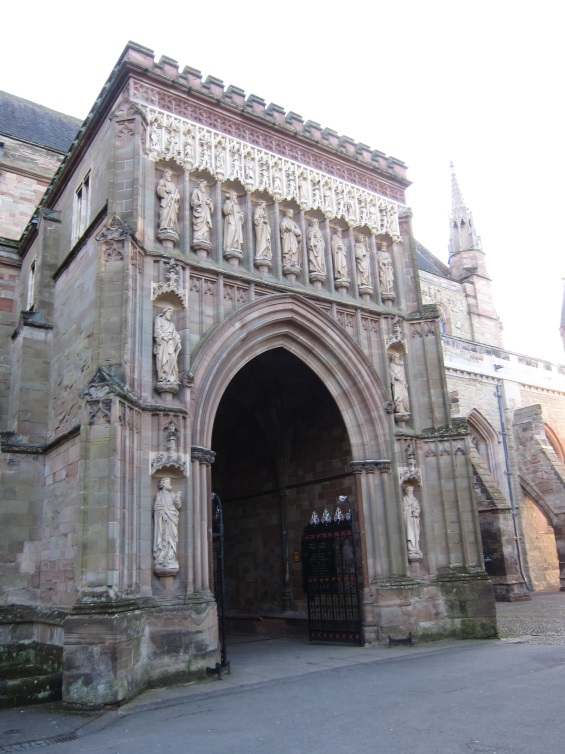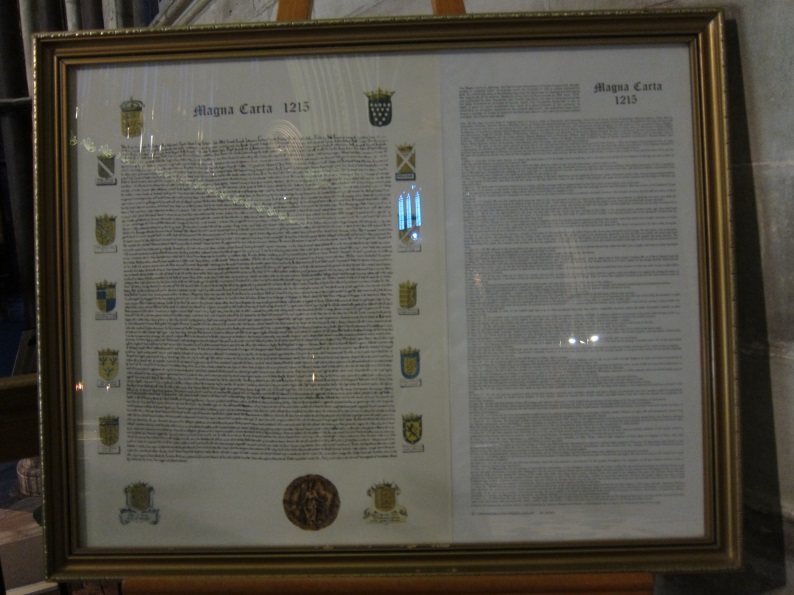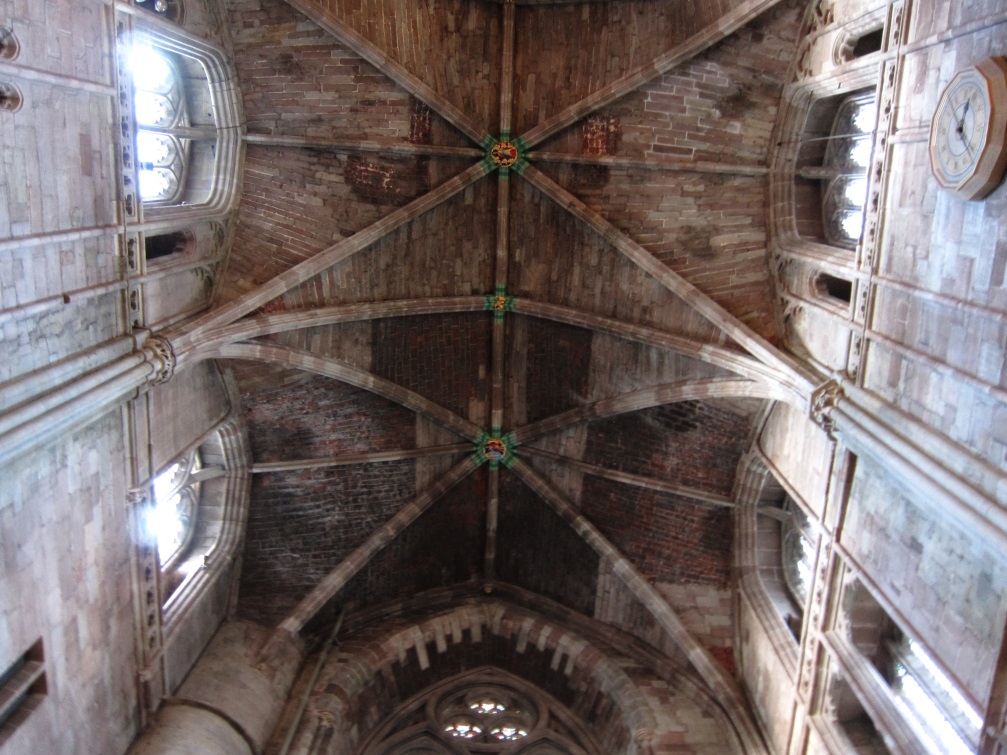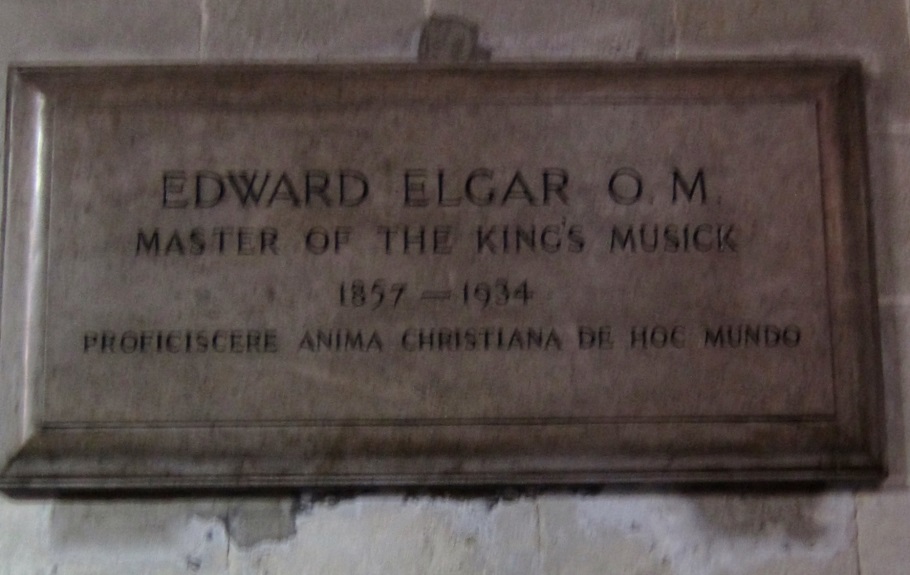Worcester Cathedral
Saxon Priory, Royal Mausoleum
Chapter 2 : History
The original foundation at Worcester is reputed to have been made in 680 AD, with a new foundation in 983 AD by Bishop Oswald, and the current cathedral begun in 1084 by Wulfstan, Bishop of Worcester. Wulfstan was the only pre-Conquest Bishop to retain his see for any length of time. He was a strong critic of the slave trade, which may have endeared him to William the Conqueror – the Normans did not approve of slavery – in theory, anyway.
Wulfstan's establishment was a Benedictine Priory, and the original Chapter House and parts of the College Hall date from this period. As a Benedictine foundation, there was great emphasis on learning, leading to the development of the library, which still holds many mediaeval manuscripts. Various Royal Charters, dating from the reigns of Richard II, Henry VIII, Edward VI and William & Mary are housed in the library.

In Henry II's time, Worcester was a frequent stopping point for the royal court, and Henry and his wife Eleanor of Aquitaine laid their crowns on the altar at Worcester at Easter 1159 as offerings. Henry's son King John also visited the Priory – he had a particular devotion to the cult of St. Wulfstan. He is buried here, and his Will is one of the documents preserved by the Cathedral.
A fire in 1202 caused extensive damage which resulted in the rebuilding of the east end in the Early English style – with re-consecration in 1216. During the Barons' War, the city of Worcester was sacked by de Montfort, but the Priory was spared.

One of the most interesting events to have occurred at the door of the Priory church, was the marriage on St Edward's Day 1278 (13 th October) of Eleanor de Montfort, first cousin of Edward I of England, to Llywelyn ap Gruffudd, Prince of Wales. The marriage (planned years earlier, but prevented by the English King) was carried out as part of the Treaty of Aberconwy.
On 2 May 1502, the Priory was witness to a much sadder event than a wedding. Arthur, Prince of Wales, who had been living in Ludlow, presiding over the Council of the Marches, died, aged only fifteen, and was brought to Worcester Priory for burial. The weather was noted as particularly wet, windy and stormy. As was customary, neither his parents, Henry VII and Elizabeth of York, nor his young widow, Katharine of Aragon, were present at the ceremony.
His weeping household, led by Sir Richard Pole (husband of Queen Elizabeth's cousin, Lady Margaret Plantagenet) followed the black-draped coffin and, after it was placed in the tomb to the right of the High Altar, broke their staves of office and threw them into the grave. Nine lessons were read, the first by the Abbot of Tewkesbury and the sixth by the Prior of Worcester (the Bishop was not present).

Arthur's embroidered coat of arms, the sword, shield, and crested helmet of the prince were carried up the choir with the son of the Earl of Kildare wearing the prince's armour, and mounted on his horse. A chantry chapel, decorated with figures of the prince, and his armorial achievements was built over the site.
As part of her period in the Marches between 1525-1528, Princess Mary stayed fourteen weeks in the environs of the Priory, including some time actually in the guest house.
In 1537, Bishop Latimer, who had been instituted as Bishop of Worcester in 1535, visited the Priory and discovered that the new statutes against images and idolatry were not being properly observed. He laid down strict injunctions, particularly in relation to the English Bible. With the Dissolution of the Monasteries, the life of the Benedictine Priory that had lasted for eight hundred years came to an end.
The Priory was surrendered by Prior Holbeach on 18 th January 1540. It was re-founded as the Cathedral of Worcester on 24th January 1542, and some of the former monks, led by Holbeach, became the first Dean and Chapter of the new Cathedral.
Elizabeth visited Worcester Cathedral in 1575, inspecting the tombs of King John and her uncle, Arthur, Prince of Wales, listening to a concert, and attending the Sunday service.
The Battle of Worcester 1651 was the last engagement of the English Civil War, and won comprehensively by Parliament. Fortunately, the Cathedral was not damaged. The young Charles II escaped (to hide in an oak tree) before taking ship to France. Charles was unable to pay the bill for the uniforms he had ordered from Worcester's clothiers – it was finally paid in 2008 by Charles, the current Prince of Wales.

Heavy restoration work was done on the Cathedral during the Victorian era by Sir George Gilbert-Scott. The majority of the stained glass dates from this period 1864 – 1875.
